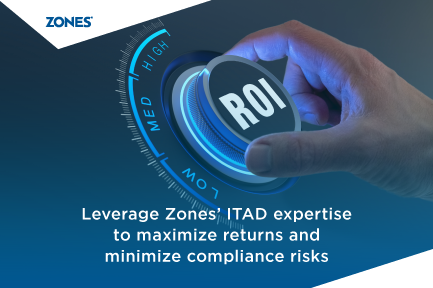3 min read
Driving Sustainable ITAD in the Age of Circular Economy
The global push for sustainability has ignited a paradigm shift in how organizations approach IT Asset Disposition (ITAD). In the age of the...
3 min read
![]() Zones
:
Aug 2, 2023 8:00:00 AM
Zones
:
Aug 2, 2023 8:00:00 AM

Organizations are increasingly relying on robust and interconnected technology systems to drive their operations. Businesses are turning to IT integration and configuration services to achieve seamless functionality and optimal performance. These services encompass a range of processes and strategies aimed at integrating disparate systems, applications, and data sources while configuring them to meet specific business needs. Organizations are recognizing the significance of IT integration and configuration services as crucial elements for streamlining operations, boosting productivity, and maintaining competitiveness. This recognition is fueled by the surge in technological advancements and the increasing demand for efficient data exchange.
IT integration refers to the process of connecting different technology systems, applications, and data sources within an organization to enable seamless communication and data exchange. It involves combining and consolidating various IT components to create a unified and interconnected infrastructure. Whereas IT configuration involves setting up and customizing technology systems, applications, and hardware to align with specific business requirements. Companies have started investing in partners who can provide the best IT integration and configuration services to leverage specialized expertise, reduce operational costs, and ensure efficient implementation and management of complex technology systems.
By leveraging IT integration and configuration services, organizations can achieve several benefits. First, it enables a holistic view and centralized management of IT assets, simplifying administration and improving visibility into the IT environment. Second, it promotes interoperability and data consistency across systems, facilitating efficient data exchange and collaboration. Third, it enhances security by implementing standardized configurations, access controls, and security protocols. Finally, it optimizes asset performance and resource utilization, leading to improved operational efficiency and cost savings.
In summary, IT integration and configuration services enable businesses to adapt and evolve in a rapidly changing technology landscape. Whether it's integrating diverse software applications, configuring network infrastructure, or aligning hardware resources, the right vendor ensures seamless connectivity and optimal performance of their technology systems.
Zones’ ISO Certified teams around the globe are ready to custom design, build and configure your IT assets. By partnering with Zones, you can leverage our wide range of certified engineers and technical resources to configure and deliver your assets anywhere, on time, and on budget.
Get in touch with our team to implement asset integration and configuration for your business.

3 min read
The global push for sustainability has ignited a paradigm shift in how organizations approach IT Asset Disposition (ITAD). In the age of the...

Zones has extensively invested in its IT Asset Disposition (ITAD) capabilities in recent months to satisfy the growing demand for safe, compliant,...

How Zones’ ITAD Services Maximize ROI and Minimize Risk As technology cycles accelerate and data security stakes rise, businesses are rethinking how...